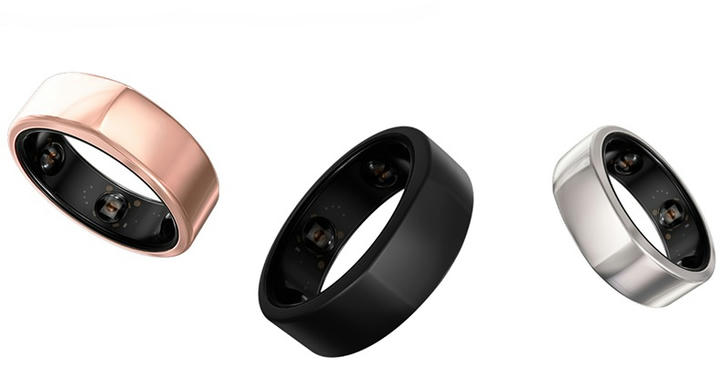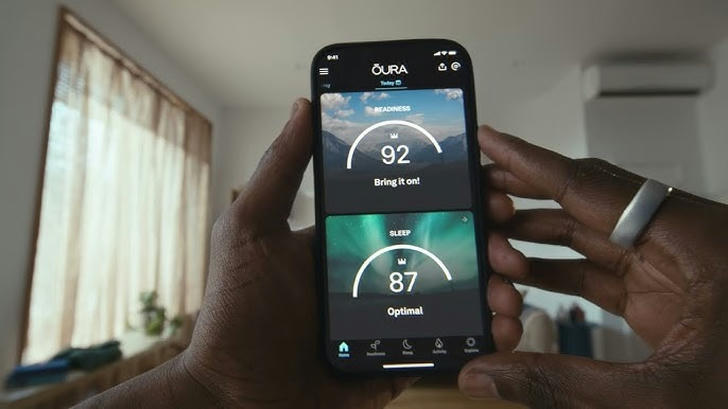Wearable Health Tech in 2025: What Your Ring Knows About You
Wearable Health Tech in 2025: What Your Ring Knows About You
In 2025, health isn't just something you track—it's something your tech understands, predicts, and optimizes. Among the most groundbreaking innovations in this space is wearable health technology, with a surprising frontrunner: the smart ring.
These unassuming, lightweight accessories have evolved far beyond basic step counting. Today’s leading smart rings, such as the Oura Ring Gen4, Ultrahuman Ring Air, and Evie Ring, are equipped with sophisticated sensors that monitor everything from sleep cycles to blood oxygen levels, heart rate variability, stress patterns, and even early signs of illness. In essence, your ring now knows more about your health than you do—and it's transforming how people engage with wellness.
Let’s explore how wearable health rings are reshaping personal healthcare in 2025 and what this means for the future of wellness.
1. Tiny Ring, Massive Insights
Unlike smartwatches, smart rings are discreet, comfortable, and designed for 24/7 use. They sit close to the arteries in your finger, allowing for more accurate pulse, temperature, and movement detection. With continuous tracking enabled by advanced sensors and AI, smart rings now gather real-time biometric data with clinical-level precision.
Here’s what a modern health ring typically monitors:
- Heart rate (resting & active)
- Heart rate variability (HRV)
- Body temperature trends
- Sleep stages (light, deep, REM)
- Respiratory rate
- SpO2 (blood oxygen saturation)
- Activity and calorie burn
- Stress and recovery scores
- Menstrual and hormonal cycle patterns (in women-specific rings like Evie)
But it’s not just about data—it's about interpretation. These rings use machine learning models to analyze patterns, detect anomalies, and offer actionable insights.

2. Sleep Tracking: From Quantity to Quality
Sleep tracking is perhaps the most widely used feature—and also one of the most improved.
For instance, the Oura Ring Gen4 doesn't just count your hours of sleep. It analyzes your sleep stages, tracks overnight heart rate and temperature, and produces a readiness score each morning. This score helps users decide whether to push hard at the gym or focus on rest and recovery.
Thanks to advanced temperature sensors, the ring can also detect when your body is fighting an infection or when you may be entering a new phase of your menstrual cycle.
In 2025, sleep tracking isn’t just for curiosity—it’s a tool for proactive health decisions.

3. Your Ring as a Stress Coach
Mental health awareness has never been more important, and smart rings are stepping up.
HRV (heart rate variability) is a well-established marker of stress and resilience. Smart rings monitor HRV continuously and translate it into daily stress or recovery scores.
In combination with breathing patterns and skin temperature, many devices now offer real-time stress alerts. Feeling off-balance but can’t explain why? Your ring might tell you before you even notice.
Some devices, like the Ultrahuman Ring, also guide you toward recovery—suggesting breathing exercises, cold exposure, or simply more sleep to rebalance your nervous system.
4. Early Illness Detection
One of the most impactful benefits of smart rings is their ability to catch subtle changes that might indicate oncoming illness.
A sudden increase in resting heart rate, a drop in HRV, or an elevated skin temperature could signal a cold, flu, or even COVID-like symptoms before they’re felt. Some users report their smart ring alerting them to illness one or two days before symptoms appear.
In this way, wearable rings serve as personal early-warning systems, helping users take preventative action—rest, hydrate, or isolate—before things escalate.
5. Women’s Health and Hormonal Tracking
Devices like the Evie Ring are designed specifically for women, offering hormonal and cycle tracking, sleep quality analysis, and even mood correlations. They can help users identify patterns between hormone levels and performance, making it easier to plan workouts, work schedules, or self-care routines.
In 2025, wearable health tech is no longer one-size-fits-all—it’s tailored to biological and lifestyle needs, empowering more personalized decisions.
6. Beyond the Individual: Integration with Healthcare Systems
Perhaps the most exciting evolution is the integration of wearables with healthcare systems.
In many countries, smart ring data can now be securely shared with physicians, integrated into electronic health records (EHRs), and used to monitor chronic conditions like cardiovascular disease, diabetes, and sleep apnea remotely.
Some insurance providers are even offering discounts or incentives for using wearable tech and maintaining healthy sleep and activity scores—turning passive health data into tangible value.
7. Privacy, Security, and Ethical Considerations
With great data comes great responsibility. Users are rightly concerned about who has access to their biometric information.
Leading ring companies in 2025 are addressing this by:
- Using end-to-end encryption
- Allowing full user data ownership
- Offering opt-in options for healthcare or third-party sharing
- Complying with GDPR and HIPAA-like global standards
Still, users are encouraged to review privacy policies carefully and use platforms that are transparent and user-first.
8. What’s Next for Wearable Rings?
The roadmap ahead includes:
- Blood glucose tracking (non-invasive)
- Mood recognition through galvanic skin response
- Sleep apnea detection
- AI-driven personalized health coaching
- Integration with smart homes (e.g., dimming lights when sleep score drops)
As battery life improves and form factors shrink, rings are likely to become even more capable—and maybe even more invisible.
Conclusion: Your Ring, Your Health Ally
In 2025, wearable health rings are not just accessories—they’re personal wellness assistants, preventative care tools, and daily decision guides.
They help us understand not just how much we move, but how well we recover, how stressed we are, and when we need to rest or push harder. As they continue to evolve, these tiny devices may become the most important health tools we own—working quietly on our fingers, night and day, to help us live longer, stronger, and more mindfully.
Because in the future of health, knowledge isn’t just power—it’s prevention.
